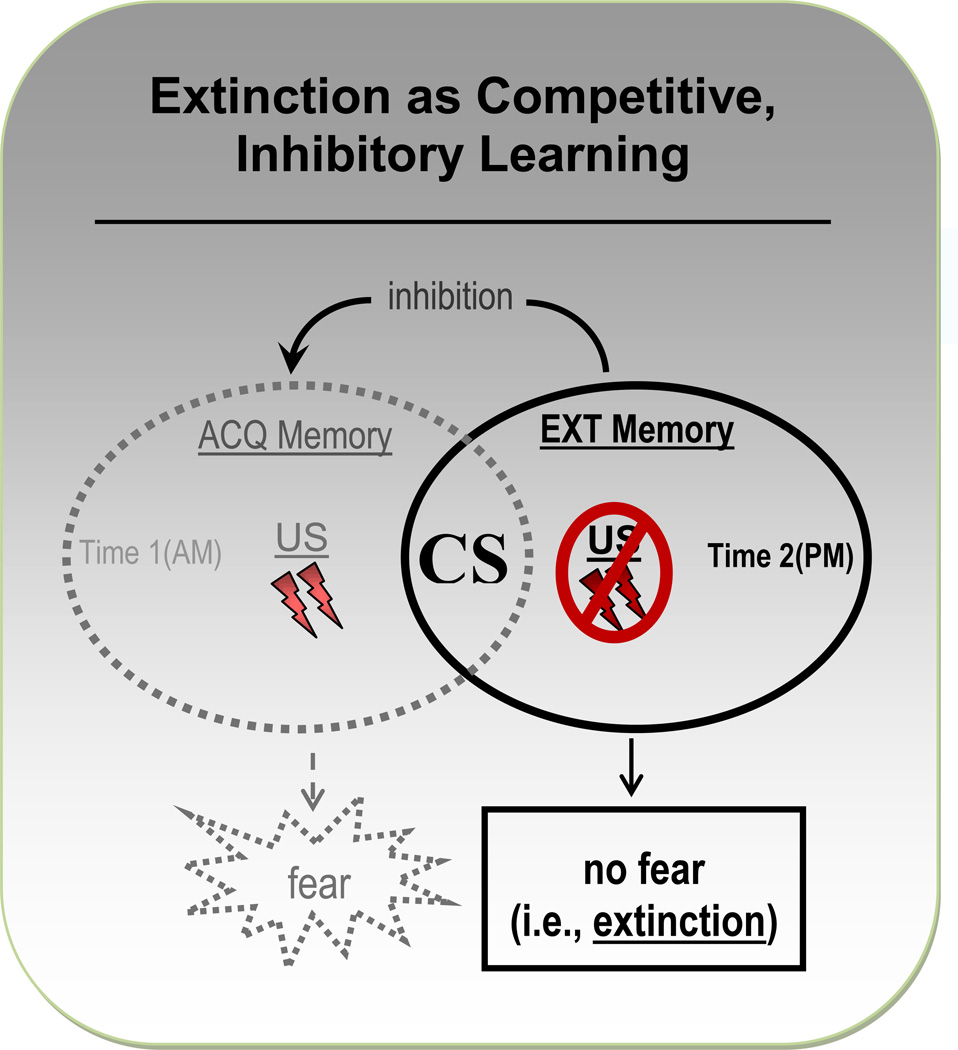Figure 1.
Schematic display of the competing nature of acquisition (ACQ) and extinction (EXT) memories of the conditioned stimulus (CS). In this example, ACQ of conditioned fear follows from presentations of the CS together with an electric-shock US during a morning (AM) testing session. The EXT memory is encoded later that afternoon (PM) during a testing session in which the CS is repeatedly presented in the absence of the US. These ACQ and EXT learning experiences generate two competing memories of the CS, with the former representing the CS as an anxiogenic predictor of aversive shock and the latter characterizing the CS as a benign stimulus associated with no aversive outcome. Activation of the ACQ memory of the CS elicits fear, while activation of the EXT memory of the CS elicits no fear. Successful EXT learning depends on an EXT memory of the benign CS that is strong enough to outcompete the ACQ memory for excitation, thereby inhibiting both activation of the ACQ memory and the associated fear reactivity to the CS.

